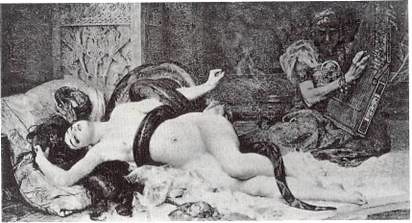Yesterday I acquired Bohemian Versus Bourgeois at Demian bookstore, Antwerpen. It appears to be one of the earliest books on alienation in modern art, taking a sociological approach. Colin Wilson has done the same with a psychological approach in 1956 with The Outsider.

Bohemian Versus Bourgeois: French society and the French man of letters in the nineteenth century (1964) – César Graña [Amazon.com] [FR] [DE] [UK]
It’s in this book that one finds references to the group of French artists les bousingots, which is rendered bousignots in the index. Web references to this groups include: “Hugnet, Georges, 1906-1974. Bousignots, excentriques et isolés du romanisme, typed manuscript with handwritten corrections together with signed typed letter 1954 Oct. from L. Mollion of Radiodiffusion Français”. The book itself references Théophile Lavallée’s Histoire de Paris depuis le temps des Gaulois jusqu’en 1850 published by J. Hetzel, Paris, 1852. [Feb 2007]
César Graña bio
César Graña (1919 – 1986) was a Peruvian anthropologist who received his Ph.D. of sociology from the University of California. In 1942, he came to the United States.
César Graña’s best known work was based on the sociology of art. He wrote Bohemia vs. Bourgeois: French Society and the French Man of Letters in the Nineteenth Century, which was published in 1964, this work is also known as Modernity and its Discontents. In 1989, he released Meaning and Authenticity. On Bohemia: The Code of the Self Exiled was published in 1990. In 1994, Fact and Symbol was published and it was nominated for a National Book Award. Graña died on August 24, 1986 in a car crash. —[1]
An excerpt from cultural relativist Roger Sandall’s The Culture Cult:
In his 1964 study Bohemian Versus Bourgeois César Graña shows how [the bohemians] claimed a more natural sympathy with other cultures than the bourgeoisie could possibly possess. They regarded the lives of the French commercial and professional classes as utterly degrading. Graña describes Stendhal’s horror of the lowness and meanness of the middle-class, and how “anyone who acquired a routine social obligation or worked at a profession received from Flaubert either casual scorn or mocking sorrow”. This same contempt for the routine world of paid employment was pushed to an extreme by Baudelaire, whose attitude—“to be a useful person has always appeared to me to be something particularly horrible”—expressed pure aristocratic disdain.
Flaubert’s hatred for the bourgeois was at times almost maniacal. After completing his second novel Salammbo in 1862 he wrote that “It will: 1) annoy the bourgeois; 2) unnerve and shock sensitive people; 3) anger the archaeologists; 4) be unintelligible to the ladies; 5) earn me a reputation as a pederast and a cannibal. Let us hope so.” While research into sexual behavior is a normal part of anthropological inquiry, it was a personal interest in erotic experience—romantically justified as self-fulfilment—which drove literary bohemia on its escapades. — Roger Sandall via http://www.culturecult.com/culturecult/bohemia.htm [Jun 2006]
See also: Flaubert – Stendhal – Baudelaire – bohemia – bourgeois – genre theory










